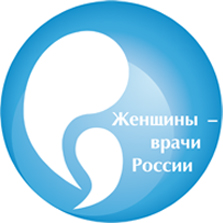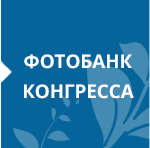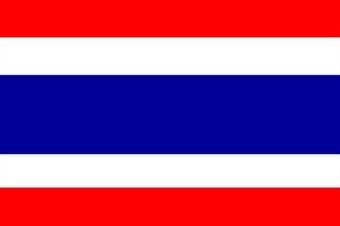
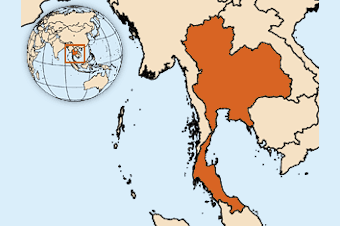
Tailand
1. Statistics
Total population (2016) 68,864,000
Gross national product per capita (international PPP dollars, 2013) 13,510
Estimated life expectancy at birth m/w (years, 2016) 72/79
Probability of dying (per 1,000 live births, 2018) under age five 9
Probability of dying ages 15-60 m/w (per 1,000 live births, 2016) 203/91
Total health care expenditures per capita (in international dollars, 2014) 600
Total health expenditure as a % of GNP (2014) 4.1
(latest Global Health Observatory data)
2. General information about Thailand
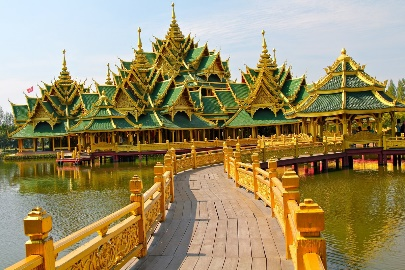
Thailand is one of the major nations of Southeast Asia, located on the Indochina Peninsula and in the northern part of the Malacca Peninsula. It is the only country in the region without the colonial regime of the European states. The economy of Thailand is at an average level of development, but it varies greatly in different parts of the country.
Thailand has developed different types of tourism, agriculture, which is characterized by the presence of several crops a year. About 37% of the total area of the country is covered by forests: in the northern part it is tropical deciduous, and in the southern part - tropical evergreen. Most part of the year the weather is hot and humid. The hottest time is from April till May (+35 ... +40 °С) and the coldest is in the mountainous part of the country.
In Thailand the industry and agriculture are developed. One third of the economically active population works in agriculture, it occupies about 1/10 share of gross domestic product, industry provides about 36%, and the service sector - up to 56%.
Thailand sells automobiles and auto parts, agricultural products, including canned foods, electronic products, electronic equipment, computer parts. The country plays a significant role in meeting the world's needs for tin, tungsten and gypsum. Natural gas is produced in certain quantities. Thailand has a large shadow economy, which is one of the most developed in the world, accounting for 41% of the real GDP. The role of tourism in the economy is higher than in any other Asian country.
The most economically developed area of the country, of course, is its capital - the city of Bangkok.
In general, the economy of Thailand is gradually moving from agrarian to industrialized, with a high proportion of intelligent technology.
3. Thailand's health care system (prevention)
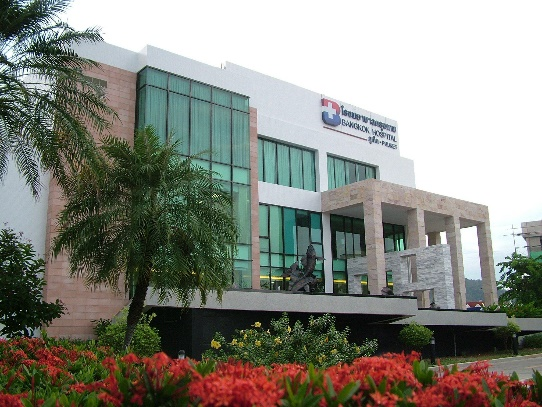
Health care in Thailand is held by the Ministry of Public Health (MOPH) as well as several non-government government agencies. Thailand's network of public hospitals provides health care to all Thai citizens under three government schemes. Private hospitals complement the system, especially in Bangkok and large cities, but access to health care in rural areas is still much lower than in cities.
Medical care is provided through three programs: the social security system for government employees and their families, private employees, and the Universal Coverage Scheme introduced in 2002, which is available to all other Thai citizens. Some private hospitals are participants in the programs, but most are funded by self-pay patients and private insurance. According to the World Bank, 99.5 percent of the population has health insurance.
The National Health Security Office (NHSO) provides funding through the universal coverage program. Other government agencies related to health care include the Health System Research Institute (HSRI), the Thai Health Promotion Foundation ("ThaiHealth"), the National Health Commission Office (NHCO), and the Emergency Medical Services Institute of Thailand (EMIT).
Thailand passed universal coverage reforms in 2001, becoming one of the few lower-middle-income countries to do so.
Hospitals
Thailand's 68 million people are served by 927 government hospitals and 363 private hospitals, with 9,768 government medical centers and 25,615 private clinics.
Thailand has a nontraditional approach to first aid in an emergency: It sends volunteers. About 65 percent of emergencies in Bangkok are handled by volunteers. Fully equipped ambulances with professional personnel are dispatched only when necessary.
There are three levels of emergency medical care in Thailand: from the first aid level (FR) to basic life support (BLS) and advanced life support (ALS) levels. Most volunteers have reached the FR level. They are affiliated with foundations and local administrative agencies. The Emergency Medical Center in Thailand handles about 1.5 million medical emergencies each year. About a million calls are handled by FR teams transporting patients to medical facilities, and BLS and ALS teams about 200,000 cases each.
Two organizations, Poh Teck Tung Foundation and The, are the two largest free first responders in Bangkok.
For most of its history, rural areas in Thailand have not received medical care. In 1975, the government launched a rural-urban health care program and later government officials required that all doctors trained in Thailand start their careers in rural hospitals and then move to urban hospitals.
Non-communicable diseases account for the main burden of death in Thailand, but communicable diseases, including malaria and tuberculosis, as well as traffic accidents, are also important public health problems.
Major infectious diseases in Thailand also include bacterial diarrhea, hepatitis, dengue fever, malaria, Japanese encephalitis, rabies, and leptospirosis.
Another problem in Thailand is the misuse of antibiotics for humans and livestock, which has led to the spread of drug-resistant microorganisms, creating new strains of "superbacteria" that can only be defeated with "last resort" drugs with toxic side effects. A Ministry of Health study found that an average of two people die every hour in Thailand from multidrug-resistant bacterial infections. This mortality rate is much higher than in Europe.
4. Well-known public and private hospitals in Thailand
Government hospitals in major cities in Thailand:
Samui Island: Nathon Hospital (Samui Government Hospital),
Hua Hin: Hua Hin Hospital,
Phuket: Vachira Phuket Hospital,
Pattaya: Pattaya Banglamung Hospital,
Krabi Town: Krabi Hospital,
Bangkok: Bangkok Christian Hospital, Saint Louis Hospital.
The best private hospitals in Thailand are:
Bumrungrad International, Bangkok Hospitals Group, and Samitivej Hospital Bangkok. They are popular with American and European tourists. Prices for medical services here are about 20% lower compared with the USA, Canada, EU countries. Private clinics in Thailand train their staff abroad and buy the best medical equipment, so they are almost as good as the best medical clinics in Western Europe.
Text translated by a representative of «Russian Medical Women’s Association» Bondarenko Anastasia.
